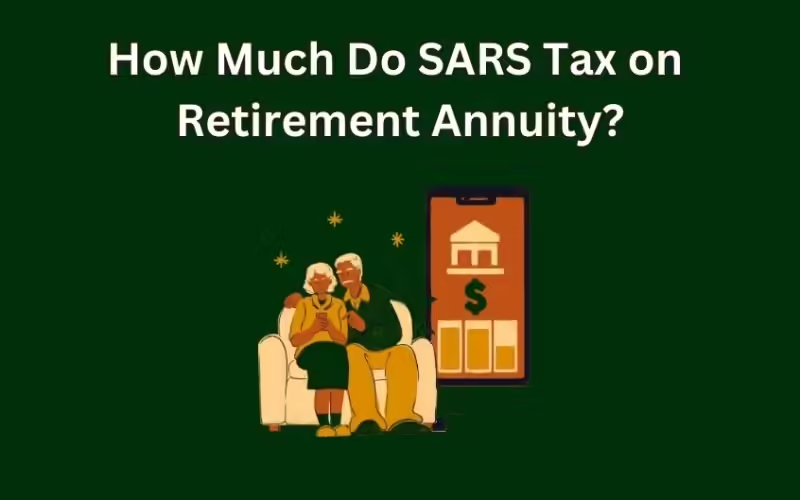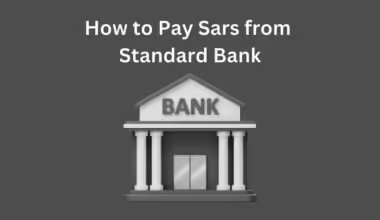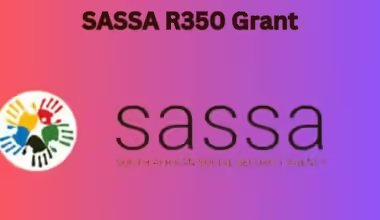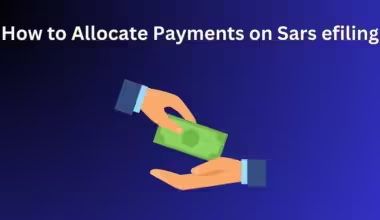The tax administration and collection of various taxes on behalf of the government is the responsibility of the South African Revenue Service or SARS. This category includes a variety of taxes, including fuel and environmental levies, as well as income tax, value-added tax (VAT), customs and excise fees, and others.
By ensuring that tax laws and regulations are followed, increasing the efficiency of tax collection activities, and decreasing cases of tax evasion and fraud, the South African Revenue Service (SARS) aims to safeguard the integrity of the tax system.
This includes informing taxpayers of their tax responsibilities, offering them effective and convenient services, and using audits and investigations to enforce tax rules.
Since aging is unavoidable, knowledge of retirement annuities and related subjects is essential. For this reason, the “domain” name is centered on providing information about the SARS tax on retirement annuities, including the tax components and percentages.
How much does SARS tax on retirement annuity?
Depending on the individual’s tax band and the amount contributed, the South African Revenue Service (SARS) taxes retirement annuities differently. Annuity payments made during retirement are taxed as income, and contributions to an annuity for retirement are tax deductible up to a certain amount.
The current deduction cap is R350,000 per tax year, or 36% of taxable income or compensation, whichever is higher. In other words, a person’s taxable income is reduced when they make contributions to a RA, hence reducing their tax liability.
The amount of tax paid is determined by the individual’s tax bracket and the portion of the payment that is taxable. Currently, the first R500,000 of a person’s retirement benefits are tax-free.
- R1-R550 000 0% of income that is taxed
- R550,001– R770,00 18% of taxable income
- R 550,000 -R770,000 (27% of taxable income between
- R770,001 -R1155,000: 36% of taxable income above R1155,000.
Can SARS take my retirement annuity?
Law enforcement and tax collection in the nation are handled by the South African Revenue Service or SARS. SARS is unlikely to take a retirement pension if there are no outstanding taxes.
How much tax do you get back on retirement annuity?
Contributions to retirement annuities are restricted to R350,000 each tax year, or 27.5% of your taxable income or compensation. It is possible to carry over excess contributions to subsequent tax years.
You are eligible for a 27.5% tax reduction if you make a R100,000 contribution to a retirement annuity and your taxable income is R500,000. Your taxable income drops to R400,000 as a result.
Multiply your contribution by your marginal tax rate to get your retirement annuity tax refund. (the maximum tax rate that was imposed on any portion of your earnings). You would get R3,000 back if your annual contribution was R12,000 and your marginal tax rate was 25%. R4,920 would be your refund at a marginal tax rate of 41%.
Do you pay tax on retirement annuities?
Generally speaking, the answer is yes; you will have to pay taxes on the money you get from a retirement annuity. The amount of taxes you owe at the end of the year will depend on your retirement annuity type and your marginal tax rate.
How do I calculate the taxable amount of an annuity?
The taxable amount depends on the annuity’s kind, the manner of purchase, and the age of the owner.
Principal and interest are included in the annuity payout.
If you purchased the annuity after taxes, just the interest is subject to taxation. Pre-tax annuity payouts are all subject to taxes. IRAs and other tax-deferred accounts typically have fully taxable qualified annuities.
Contributions to retirement annuities are tax deductible up to R350,000 annually and 27.5 percent of income. Contributions to provident funds and employer pensions are included in these caps.
Here are some examples of how to determine how much of an annuity is subject to South African taxes:
Example 1: Gustav receives R10,000 a month from a life annuity at the age of 65. To determine the amount of his annuity that is taxable, follow these steps:
The first R500,000 of a life annuity is tax-free for those 65 and older.
A person’s highest tax rate is applied to any amount over R500,000.
In this instance, John’s annual taxable annuity is R60,000 (R10,000 x 12 months) less the R500,000 tax-free sum, or R0. The money that John receives from his annuity is tax-free.
For the next 15 years, Nella, who is currently 57 years old, will get a guaranteed monthly salary of R8,000. To determine the amount of her annuity that is taxable, follow these steps:
Every guaranteed annuity payout is subject to full taxation.
The tax rate is calculated using Sarah’s marginal tax rate.
In this instance, Sarah’s monthly taxable annuity payment is R8,000, or R96,000 year. Her marginal tax rate will be applied to this sum.
Example 3: For the remainder of his life, Gustav, who is 60 years old, will get a payment of R20,000 per month. He also receives a retirement annuity (RA) payment of R5,000 per month. To determine the amount of his annuity that is taxable, follow these steps:
It is estimated that R500,000+ is the portion of Gustav’s life annuity that is not subject to taxes. (R10,000 times the number of years that you are over 55).
The individual’s marginal tax rate is applied to any sum over the amount that is not subject to taxation.
At his marginal tax rate, David must pay taxes on the entire amount of his RA.
Here’s how to determine how much of David’s annuity is taxed in this situation:
The R700,000 portion of his life annuity is exempt from taxes; this is equal to R500,000 plus (R10,000 x 5).
His annual taxed portion of his life annuity is R200,000 (R20,000 times 12 months), less the R700,000 that is not subject to taxes, or R0.
The entire amount of his RA is subject to his marginal tax rate.
How much will my retirement benefits be taxed?
The lump payment that you get upon retirement may be taxable if you have made contributions to a pension or provident fund during your working years. You are currently exempt from paying taxes on the first R500,000 of your retirement benefit. For any sum that exceeds or equals this threshold, the tax rate is progressive up to a maximum of 36%.






